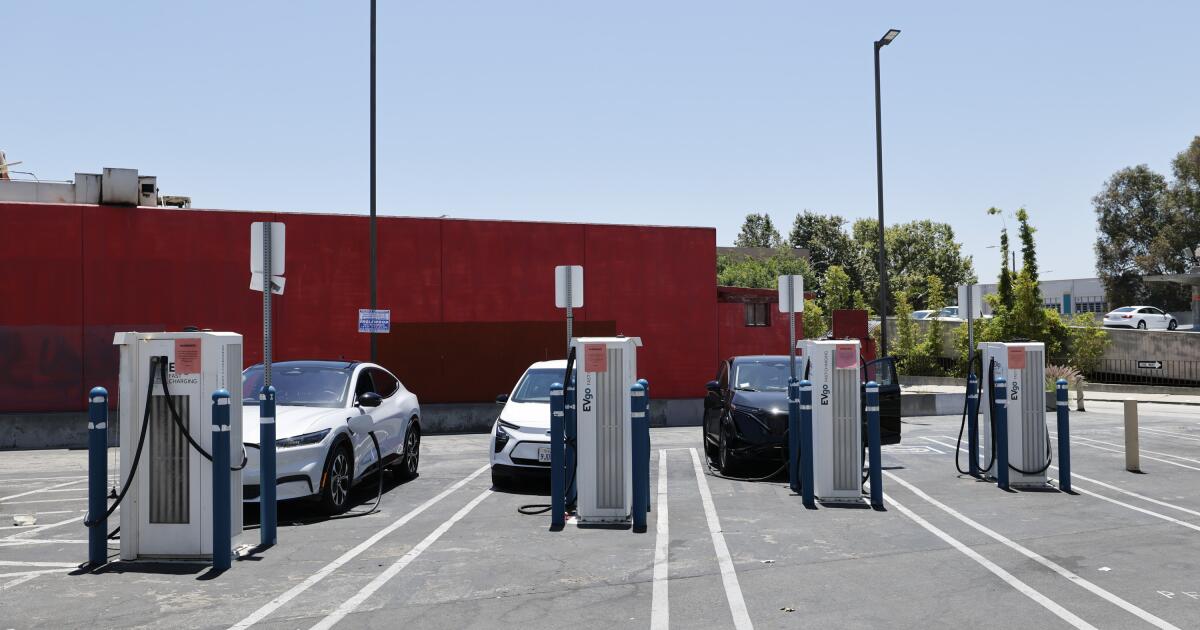
Americans just lost federal tax credits for buying an electric vehicle, but charging one has grown more convenient in recent months.
About 780 public high-speed charging stations opened in the US in the third quarter, the largest such infrastructure boom on record, according to Department of Energy data. The nation’s charging infrastructure expanded by 19% in the first nine months of the year.
“The growth is pretty amazing right now given current policy and investment sentiment,” said Chris Pierce, an analyst covering charging networks at Needham & Co. investment bank.
Many of the new stations were likely given the green light before President Trump took office, according to Pierce. However, charging executives say the market for electrons is still underserved, even though EV sales are expected to slow without federal incentives.
“For a long time, the market was totally lopsided with a scarcity of chargers,” Pierce said. “Now, it’s getting a little less scarce, but we’re still nowhere near a saturation point.”
Though early EV adopters tend to charge at home, newer converts are far more likely to charge in the wild, according to EVgo Inc., which operates one of the largest charging networks in the US. Battery-powered cars are particularly popular among rideshare drivers, and the market for used EVs is booming.
“The recent trend of more electric vehicles per fast charger is likely to continue,” EVgo Chief Executive Officer Badar Khan told investors on an August earnings call.
The charging map is also being filled in by restaurants and retail stores, which increasingly see cords as a way to attract customers. From July through September, six charging stations switched on at Cracker Barrel restaurants in the Deep South, for example. The list of openings in the past three months also included 14 at Target Corp. stores; 12 at Wawa Inc. outlets; and four apiece at Ikea and Dunkin’ donut shops.
Pilot Travel Centers LLC, which owns about 800 truck stops and travel centers in the US, has been particularly aggressive. The company now has chargers in slightly more than a quarter of its locations, including 27 stations that switched on in the most recent quarter.
Pilot has been adding chargers in places that until recently were electron deserts, namely the Dakotas, the Deep South and Wyoming. “We are committed to showing all of our guests that they matter,” Brandon Trama, the company’s head of vehicle electrification, said via e-mail.
The charger growth is at odds with estimates that EV sales will stall in the coming years without federal subsidies. Just last week, Ford Motor CEO Jim Farley posited that the electric share of US car sales may fall from around 10% to around 5% in the fourth quarter.
However, charging executives remain sanguine. Charging infrastructure, they note, is still catching up to EV adoption and sales of new EVs may prove more resilient than expected, particularly as prices drop and more affordable models debut. Indeed, the US still has one of the developed world’s largest imbalances between registered EVs and public chargers.
“There’s just a bunch of things happening out there that are going to bring the selection up and the price down on EVs,” ChargePoint Holdings Inc. CEO Rick Wilmer told investors in September, “which we believe will drive overall demand for EVs and thus, charging going forward in the future.”
While federal dollars may no longer be flowing to EV buyers, the spigot has once again opened for chargers. A January executive order from Trump froze a $5 billion program to stand up charging stations in rural areas and disadvantaged communities. However, in June a federal court ordered the administration to restore funds to 14 states that sued over the suspension.
On Sept. 17, Illinois — one of the states that sued — awarded $18 million to build 25 new charging stations along its interstate corridors.